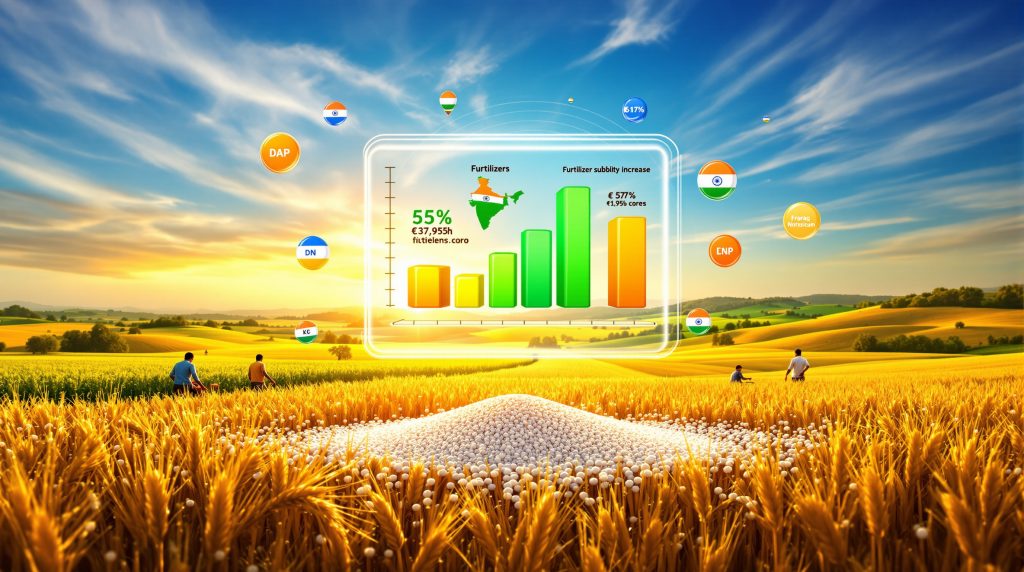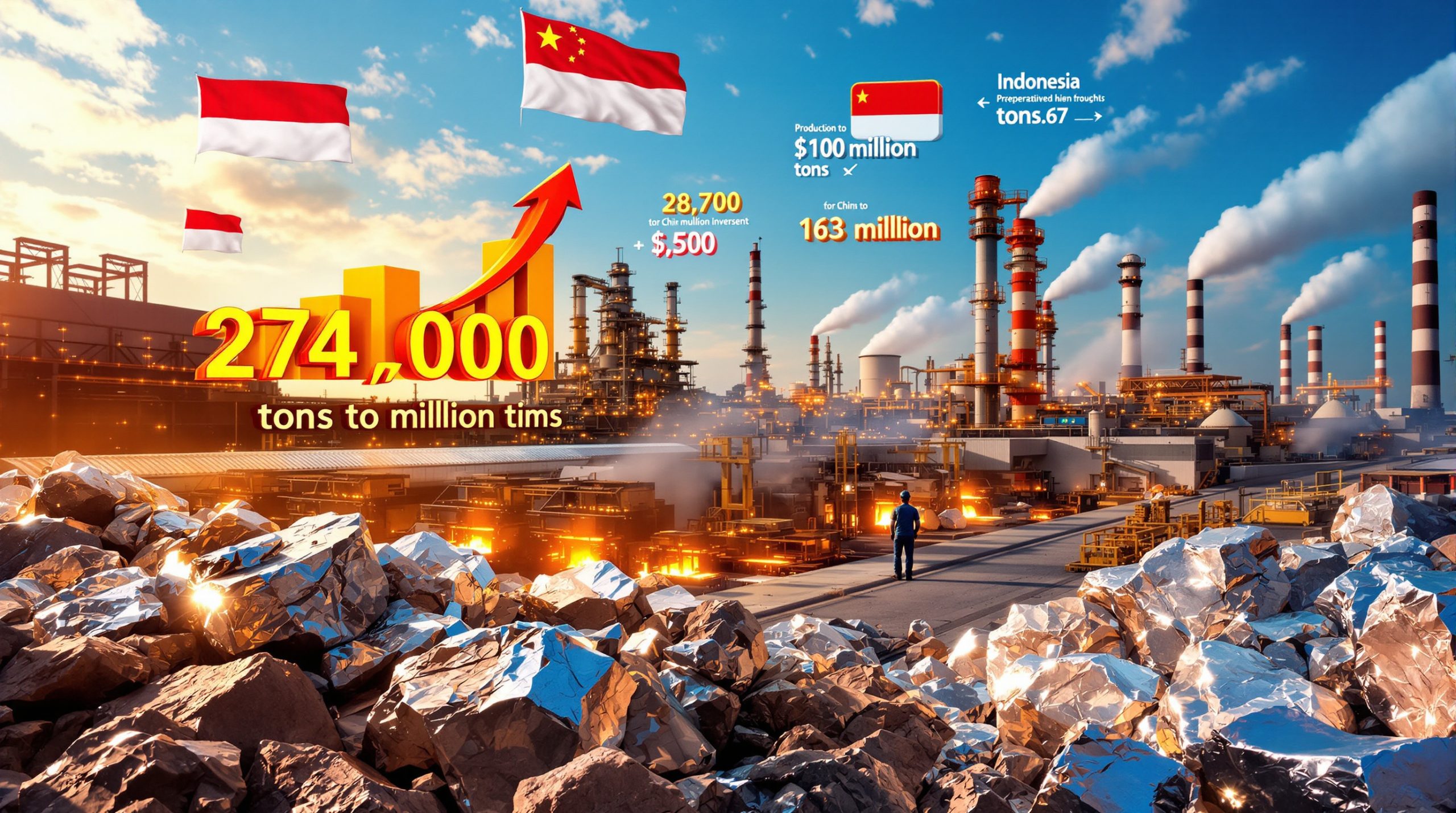Understanding India's Historic Fertilizer Subsidy Expansion
India's agricultural sector experienced a pivotal moment in October 2025 when the government cabinet approved a substantial increase in fertilizer subsidies for the Rabi winter cropping season. According to Argus Media reporting from October 28, 2025, the cabinet allocated ₹379.52 billion ($4.3 billion) under the Nutrient-Based Subsidy framework, representing a dramatic expansion in government agricultural support. The decision, where india raises fertilizers subsidy to unprecedented levels, demonstrates the government's commitment to supporting farmers during volatile market conditions.
This policy shift marks one of the most significant year-over-year subsidy increases in India's modern agricultural history, directly impacting millions of farmers across the subcontinent while reshaping global market dynamics.
Decoding the Nutrient-Based Subsidy Framework
The Nutrient-Based Subsidy system has operated as India's cornerstone fertilizer affordability mechanism since 2010, providing direct financial assistance to manufacturers and importers rather than individual farmers. This approach enables controlled retail pricing while maintaining market-driven distribution networks.
Core NBS System Features:
- Coverage of 28 distinct phosphatic and potassic fertilizer grades
- Exclusion of urea, which operates under separate subsidy protocols
- Per-kilogram subsidy calculations based on essential nutrient content
- Seasonal rate adjustments responding to global commodity fluctuations
The system's sophistication lies in its ability to balance government fiscal responsibility with farmer affordability needs, creating price stability during volatile international market conditions.
Quantifying the 2025 Subsidy Surge
The October cabinet decision represents a 55% increase from the previous year's winter allocation, translating to approximately ₹14 billion in additional government expenditure compared to 2024 levels, as reported by Argus Media on October 28, 2025.
Detailed Subsidy Rate Adjustments:
| Nutrient Component | Previous Rate (Kharif 2025) | New Rate (Rabi 2025-26) | Percentage Change |
|---|---|---|---|
| Phosphorus | ₹43.60/kg | ₹47.96/kg | +10% |
| Sulphur | ₹2.61/kg | ₹2.87/kg | +10% |
| Nitrogen | ₹43.02/kg | ₹43.02/kg | No change |
| Potassium | ₹2.38/kg | ₹2.38/kg | No change |
The selective increases demonstrate targeted government intervention addressing specific nutrient cost pressures rather than blanket subsidy expansion across all fertilizer components.
Primary Beneficiaries of Enhanced Support
Di-Ammonium Phosphate emerges as the principal beneficiary, with subsidy rates climbing 7% to ₹29,805 per tonne, according to Argus Media data from October 28, 2025. Combined with the special additional support package of ₹3,500 per tonne, total DAP subsidies reach ₹33,305 per tonne while maintaining the maximum retail price at ₹27,000 per tonne.
Major Fertilizer Grade Subsidy Evolution:
-
Single Super Phosphate (16% SSP): ₹7,989/t (10% increase)
-
NPK 20-20-0+13S: ₹18,569/t (5% increase)
-
NPK 10-26-26: ₹17,390/t (7% increase)
-
NPK 28-28-0: ₹25,474/t (5% increase)
-
NPK 15-15-15: ₹14,004/t (5% increase)
-
NPK 17-17-17: ₹15,871/t (5% increase)
-
Muriate of Potash: ₹1,428/t (unchanged)
This differential approach reflects the government's response to varying international price pressures affecting different nutrient categories.
Strategic Drivers Behind Policy Implementation
Multiple converging economic factors necessitated this subsidy expansion, primarily centered on volatile global commodity markets and agricultural input cost inflation threatening farm profitability.
Global Price Volatility Creates Policy Urgency
International fertilizer markets experienced significant turbulence throughout 2024 and early 2025. Argus Media reported on October 28, 2025, that DAP prices remained approximately $76-77 per tonne higher than April 2024 levels, while sulphur costs surged by as much as $100 per tonne above spring benchmarks.
These price escalations created unsustainable input cost burdens for Indian farmers, particularly during the critical Rabi planting season when optimal fertilisation determines crop yields for wheat, barley, and other winter staples. Furthermore, commodities volatility hedging strategies become increasingly important for government planning.
Food Security Imperatives Drive Government Response
India's decision reflects comprehensive food security priorities, ensuring farmers maintain access to balanced crop nutrition despite international market volatility. The timing coincides strategically with the Rabi planting season, when adequate phosphorus and sulphur availability proves crucial for crop establishment and development.
Economic Support for Agricultural Communities
Rising input costs threatened to compress farmer margins during a period when agricultural commodity prices remained relatively stable. The subsidy increase functions as direct income support, preserving farm profitability while encouraging continued agricultural production across India's diverse cropping systems.
India's Unique Global Fertilizer Subsidy Approach
India operates one of the world's most comprehensive fertilizer subsidy programs, distinguished by its scope, scale, and direct government intervention methodology.
Distinctive System Characteristics:
- Universal Farmer Access: Available to all registered farmers regardless of farm size or location
- Direct Price Control: Government establishes maximum retail prices for subsidised products
- Manufacturer-Focused Support: Subsidies distributed directly to producers and importers
- Dynamic Rate Adjustments: Rates modified seasonally based on global market conditions
- Multi-Nutrient Coverage: Comprehensive support across phosphatic and potassic fertilizer grades
This approach differs fundamentally from many international agricultural support models that focus on direct farmer payments or crop insurance mechanisms.
International Agricultural Support Comparisons
While numerous nations provide agricultural subsidies, India's methodology differs significantly from international frameworks in both structural approach and implementation scale.
Global Agricultural Support Comparison:
| Country | Primary Mechanism | Annual Investment | Key Features |
|---|---|---|---|
| India | Direct price support | $20+ billion | Universal access, controlled pricing |
| Brazil | Credit programs | $8-12 billion | Input financing, targeted support |
| United States | Insurance/conservation | $15-20 billion | Risk management, environmental focus |
| European Union | Direct payments | $50+ billion | Area-based payments, compliance requirements |
India's model emphasises input cost management over income support, creating different market dynamics and farmer behavioural responses compared to alternative international approaches. However, these domestic policies must also consider tariffs impact strategies in the broader economic context.
Economic Implications of Subsidy Expansion
The enhanced subsidy program generates cascading effects throughout India's agricultural and industrial sectors, influencing farmer purchasing decisions, fertilizer company profitability, and broader economic resource allocation.
Fertilizer Industry Impact
Domestic fertilizer manufacturers including Coromandel International, Fertilizers and Chemicals Travancore (FACT), and Chambal Fertilizers benefit from increased government support, potentially boosting sales volumes and revenue stability during the Rabi season. The guaranteed subsidy framework provides predictable revenue streams while reducing market volatility exposure.
Fiscal Sustainability Considerations
The ₹14 billion increase represents substantial fiscal commitment, raising questions about long-term budget sustainability within India's agricultural spending framework. Government expenditure on fertilizer subsidies now approaches $20 billion annually, requiring careful balance with other development priorities. Consequently, the decision where india raises fertilizers subsidy significantly impacts national fiscal planning.
Market Stabilisation Effects
By absorbing global price volatility through subsidies, the government creates price predictability for farmers while potentially distorting market signals that might otherwise encourage efficiency improvements or alternative nutrient management practices.
Farmer Access Mechanisms and Requirements
The subsidy system operates through established dealer networks, ensuring farmers can purchase fertilizers at government-controlled maximum retail prices while maintaining distribution efficiency.
Access Protocol Requirements:
- Valid farmer registration documentation through government systems
- Purchase exclusively through authorised fertilizer dealers
- Adherence to recommended application rates based on crop requirements
- Compliance with soil testing recommendations where applicable
- Registration in electronic definitive group needs plans (e-RDKK) for certain products
Systemic Challenges and Implementation Issues
Despite its agricultural benefits, India's fertilizer subsidy program confronts several structural and operational challenges requiring ongoing policy attention.
Fiscal Sustainability Concerns
The program's expanding costs raise questions about long-term budget viability, particularly as global commodity markets remain volatile and agricultural demand continues growing with population expansion and dietary improvements.
Distribution and Targeting Efficiency
Universal subsidies may disproportionately benefit larger farmers with greater purchasing power while potentially encouraging overuse of certain nutrients, leading to soil health degradation and environmental impacts including groundwater contamination.
Import Dependency Vulnerabilities
India's heavy reliance on imported fertilizer raw materials makes the subsidy system vulnerable to international supply chain disruptions, geopolitical tensions, and currency fluctuation impacts on import costs. Additionally, iron ore market impact considerations affect the broader industrial supply chain.
Agricultural Future Implications
The subsidy increase signals sustained government commitment to supporting agricultural productivity through input cost management while highlighting needs for longer-term structural agricultural reforms.
Strategic Considerations for Development:
- Enhanced domestic fertilizer production capacity development to reduce import dependency
- Investment in precision agriculture technologies and soil health monitoring systems
- Exploration of alternative nutrient delivery systems including organic and biological options
- Integration with broader agricultural modernisation initiatives including mechanisation and irrigation improvements
Global Fertilizer Market Influence
India's position as one of the world's largest fertilizer consumers means its subsidy policies significantly influence global demand patterns, pricing dynamics, and supply chain optimisation strategies.
International Market Implications:
- Sustained demand for phosphatic fertilizers despite elevated international prices
- Potential supply chain adjustments by multinational producers targeting Indian market requirements
- Influence on global fertilizer trade flows and regional pricing benchmarks
- Impact on production capacity planning for major exporting nations
The Indian market's price-insensitive demand, supported by government subsidies, provides stability for global fertilizer producers while potentially affecting pricing strategies in other major consuming regions.
Technology and Innovation Opportunities
The substantial government investment in fertilizer subsidies creates opportunities for technological advancement and innovation within India's agricultural input sector. For instance, the shift where india raises fertilizers subsidy creates market conditions favourable for developing critical raw materials supply chains and advanced fertilizer technologies.
Emerging Development Areas:
- Precision nutrient management systems utilising satellite imagery and soil sensors
- Slow-release and controlled-release fertilizer formulations improving nutrient use efficiency
- Biological fertilizer alternatives reducing chemical input dependency
- Digital platforms optimising fertilizer distribution and farmer education
Regional Agricultural Impact Assessment
The subsidy increases will generate varying impacts across India's diverse agricultural regions, depending on cropping patterns, soil conditions, and existing nutrient management practices.
Regional Considerations:
- Northern Plains: Enhanced wheat production potential through improved phosphorus availability
- Southern States: Rice and cash crop productivity improvements from balanced nutrition
- Western Regions: Cotton and sugarcane yield optimisation through targeted nutrient support
- Eastern Areas: Smallholder farmer access improvements to essential crop nutrients
Environmental and Sustainability Perspectives
While fertilizer subsidies support food security objectives, they also raise environmental sustainability questions requiring careful policy balance. Additionally, the Economic Times reports that the cabinet's approval extends beyond immediate agricultural benefits.
Environmental Considerations:
- Potential nutrient runoff impacts on water quality from increased fertilizer application
- Soil health implications of intensive chemical fertilizer use patterns
- Carbon footprint considerations from fertilizer production and transportation
- Integration opportunities with sustainable agriculture practices and organic farming systems
Policy Implementation Timeline and Effectiveness
The increased fertilizer subsidies demonstrate India's proactive approach to agricultural policy management during challenging global conditions. Furthermore, the Business Standard indicates that this decision reflects broader government priorities regarding agricultural sector support.
The timeline for implementing these enhanced subsidies aligns with critical farming seasons, ensuring maximum benefit for agricultural communities while maintaining market stability throughout the supply chain.
Disclaimer: This analysis is based on available market information and government announcements as of October 2025. Fertilizer markets remain volatile, and policy implementations may vary based on changing economic conditions, international trade dynamics, and agricultural sector developments. Readers should consult current government sources and market reports for the most recent information regarding India's fertilizer subsidy programs and their impacts on agricultural markets.
Ready to Capitalise on India's Agricultural Policy Shifts?
Discovery Alert's proprietary Discovery IQ model delivers real-time alerts on significant ASX mineral discoveries, including opportunities in fertilizer and agricultural commodity companies that benefit from major policy changes like India's expanded subsidy programmes. Explore Discovery Alert's dedicated discoveries page to understand why historic mineral discoveries can lead to substantial market returns, then begin your 30-day free trial today to position yourself ahead of the market.




